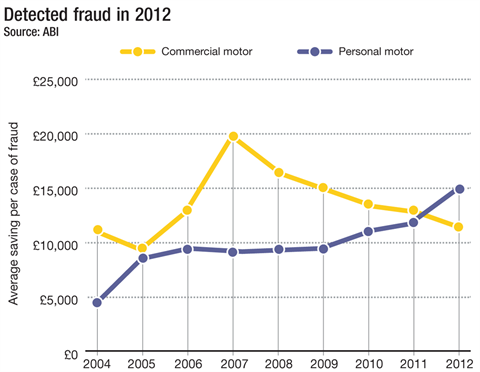Telematics provides several ways to catch out unscrupulous claimants, as the latest Insurance Monitor report reveals

When telematics broker Carrot’s engineers fit the company’s hard-wired boxes, they ask the customer to make them a cup of tea.
That way, they can tell whether the customer really lives at the address where the car is parked, and so weed out a common source of insurance fraud.
This is just one of many ways that telematics can help insurers combat fraud. The boxes themselves record vast amounts of information that can help piece together what really happened in an accident.
However, as with all new technology, telematics devices are prone to hacking and tampering, and could open up new avenues for fraudsters to scam the industry.
On-the-spot verification
Carrot’s cup of tea test has caught out would-be fraudsters “on more than one occasion”, according to product director Ed Rochfort.
This is not the only benefit to having engineers go out to fit telematics boxes into customers’ cars. The engineers can examine the condition of the vehicle – even taking photos if necessary – and check the customer’s driving licence and utility bills for proof of identity and address. They can also verify the vehicle’s current mileage.
Application forms ask customers for all these details, but having an engineer fit a box allows the details to be checked on the spot.
The data from the boxes can also uncover certain types of fraud. In essence, telematics boxes are glorified GPS trackers, and so record where a vehicle is and where it has been. It will show, for example, if a customer is driving more miles than declared in the application, or is using the vehicle for a purpose not specified under the policy.
The box can also indicate if the vehicle is being kept or driven in a more risky location than the policyholder has divulged.
Carrot’s Rochfort says: “Postcode fraud was bigger than we expected. We built a system that analyses how much time people are spending at their garaging postcode, and we were quite surprised to find the number of people who would buy a telematics policy and never go anywhere near the garaging postcode.
“It makes me wonder how many people are insuring on a traditional policy and doing that.”
Crash profile
More compelling for the industry is the ability of telematics devices to record detailed information about a collision.
The devices capture a wide array of information that is crucial to determining what happened, such as speed during and after impact, direction of travel, the g-forces involved, and whether and when the brakes were engaged. They can even detect the direction of the impact.
If the accident involves several cars, the devices can pick up which one hit first, which can help when determining liability.
One of the most taxing areas of fraud for the insurance industry is spurious whiplash claims, and telematics may also be able to help here.
The Innovation Group’s chief technology officer Sean Capes says his firm, along with the Thatcham crash research centre and a Swiss company, is examining possible correlations between physical force data recorded by telematics devices and a whiplash algorithm to see what kinds of conditions produce whiplash injuries.
However, he says: “It is still in a very embryonic stage. It is not something we can take to market.”
Source of fraud
The fraud detection benefits of telematics are not universal across all devices. Smartphone applications, for example, lack the close vehicle integration and the physical installation process enjoyed by hard-wired boxes.
Also, smartphone apps provide the biggest opportunity for new forms of fraud. For example, an unscrupulous customer could use the phone to record a bus journey and pass it off as his or her own driving, or put the phone in the car with a more cautious and experienced family member.
Because they are not linked to the vehicle, smartphones’ crash detection is less robust – simply dropping the device could generate crash data. Equally, a smartphone app can be fooled into thinking there was no crash when a crash took place.
Telematics broker Girls Drive Better’s managing director Simon Jackson says: “If you are carrying a tray of drinks through a busy restaurant, you know that if you move your body you can keep the tray still. The same applies to apps.”
Even the more robust hard-wired boxes can be tricked. There are devices on the market that can block the signal between the box and the data centre, effectively making the vehicle disappear.
Under control
Providers are quick to dismiss the risks of their boxes and apps being compromised. Carrot’s Rochfort says: “Most telematics systems have got good anti-tampering systems because most of them have evolved out of the security industries. So it is quite easy to tell if someone is messing with the box.”
Smartphone app developers say their products can detect if a customer has put their phone in a safer driver’s car.
Telematics firm Wunelli’s managing director Penny Searles says: “Our smartphone application algorithms can benchmark an individual from the first couple of hundred miles. People drive very differently. Even if they think they don’t, they do.”
Telematics is clearly not infallible but, so far, the fraud detection benefits outweigh the potential new avenues for scamming insurers.
Hosted by comedian and actor Tom Allen, 34 Gold, 23 Silver and 22 Bronze awards were handed out across an amazing 34 categories recognising brilliance and innovation right across the breadth of UK general insurance.







































No comments yet